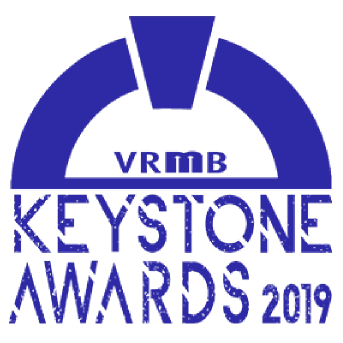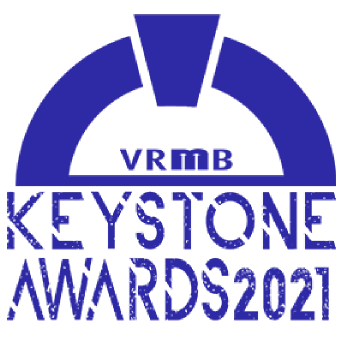While short-term rentals have traditionally been the go-to option for many hosts, as the vacation rental industry continues to evolve, mid-term rentals are gaining popularity due to their unique benefits for both property managers and renters (especially since the pandemic!).
In this article, we will cover everything you need to know about mid-term rentals, including the advantages and drawbacks of this type of rental as well as the target guests. Additionally, share valuable insights on how to optimize your rental property for longer-term stays, and cover strategies to boost your online presence, set competitive pricing, and collaborate with local businesses to attract mid-term renters.
Short-term vs. mid-term rentals
While both short-term renters and mid-term renters are in need of vacation rental properties (across Airbnb, Vrbo, Booking.com, and direct booking sites), there are a number of key differences between these two groups of potential guests—and therefore type of rental properties they seek.
Short-term rentals typically cater to vacationers or business travelers who stay for a few days or weeks. These types of rentals are often found in popular tourist destinations or bustling business districts.
On the other hand, mid-term rentals (or medium-term rentals) cater to individuals or families who require accommodation for longer stays, ranging from one to six months.
Overall, while short-term rentals offer flexibility and convenience for travelers, mid-term rentals provide a more stable income stream and a sense of community for guests. The longer duration of mid-term rentals allows for a deeper connection between hosts and tenants, creating a home-like environment that is often sought after by those in need of temporary accommodation.
Top 3 benefits of mid-term rentals
We’ve mentioned some of the reasons property managers and owners might consider offering mid-term rentals, but let’s explore more.
- Consistent income: One of the main advantages of mid-term rentals is the potential for a more stable and predictable income stream. Unlike short-term rentals that may experience fluctuations in occupancy rates due to seasonal demand or other factors, mid-term rentals offer the opportunity for longer bookings and steady cash flow. This reduces the need for hosts to constantly search for new guests to fill vacancies, allowing them to focus on providing a high-quality experience for their current tenants.
- Less frequent maintenance: From a host’s perspective, mid-term rentals allow for better planning and maintenance. With longer bookings, hosts can schedule regular cleaning and maintenance services, ensuring that the property remains in top condition throughout the guests’ stay. This proactive approach helps to minimize any potential issues and ensures a positive experience for both the host and the guest.
- Less turnover: Since mid-term rentals focus on longer stays, hosts can rely on less turnover and decreased potential for cancellations. A longer length of stay also means more opportunities for guests and neighbors to get to know each other and form connections. Less turnover therefore often benefits guests, hosts, and locals.
By leveraging these benefits, mid-term rentals can be a lucrative option for property owners looking to maximize their rental income and minimize the associated challenges.
Top 3 drawbacks of mid-term rentals
While mid-term rentals offer numerous advantages, it is important to consider the potential downsides as well. Here are some of the cons for hosts:
- Less flexibility: Mid-term rentals require hosts to commit to longer periods, limiting their ability to make changes or use their property for personal use or taking advantage of soaring market prices mid-stay. Developing a bit of a landlord mindset can help mid-term stay hosts reframe their roles.
- Higher turnover costs: When a medium-term rental ends, there may be a need for more extensive cleaning and larger repairs compared to shorter stays. After all, the longer a stay continues, the more likely the living shows! Many medium-term rental guests tend to treat these properties as home-base which means consistent wear on furnishings and amenities and may pose an increased risk of property damage or breached rental agreements.
- More (and better) amenities: Mid-term rentals often come with additional amenities and services that cater to the needs of long-term renters. These may include fully equipped kitchens, laundry facilities, and access to recreational areas such as gyms or swimming pools. It’s important to prioritize either keeping a well-stocked home (plenty of toilet paper and dish soap!) or setting clear expectations ahead of time about what is and isn’t included in a stay.
Despite these potential challenges, many hosts find that the benefits of mid-term rentals outweigh the drawbacks.
The target mid-term rental guest
Understanding the target guest for mid-term rentals is crucial for creating an effective marketing strategy. Here are some key characteristics that define the typical mid-term rental guest:
- Digital nomads: Remote workers who rely on a stable Wifi connection to perform their jobs and seek month-to-month stays while enjoying the freedom to travel.
- Business travelers: Professionals relocating temporarily to a new city and thus requiring accommodation for extended work assignments and stays (such as consultants or travel nurses).
- Temporary relocators: People in the process of moving or renovating their homes, in need of a temporary place to stay.
- Those seeking a change of scenery: Individuals or families who simply want a break from their usual environment and are looking for an extended getaway.
By tailoring your rental property and marketing efforts to appeal to these target guests, you can increase your chances of securing mid-term bookings.
Determining if mid-term rentals are right for your business
While mid-term rentals come with their unique set of advantages, it is essential to assess whether they are suitable for your specific business model. Here are some factors to consider:
- Property location: Determine if your property is situated in an area that attracts mid-term rental demand. Assess whether your area experiences any seasonal variations in demand for mid-term rentals. For example, university towns may have higher demand during the academic year.Hot tip: Research the demand for mid-term rentals in your area and identify other hosts to gain insights into your competition. Analyze popular neighborhoods, corporate hubs, or universities that attract potential guests.
- Property amenities: Assess if your property offers (or you can invest in) the necessary amenities for longer stays, such as a fully equipped kitchen, laundry facilities, or workspace.Hot tip: Research which brands have a strong reputation and when updating your property, select amenities that can take repeated use over trends that will come and go.
- Legal and regulatory requirements: As with short-term rentals, this is a big one! Familiarize yourself with any local laws and regulations regarding mid-term rentals, and ensure that you comply with any licensing or tax obligations. Also, consider consulting with an attorney to review any updated lease agreements and adjust security deposits as needed.Hot tip: Stay updated on industry trends, such as travel restrictions, new attractions, or major events, that can influence the mid-term rental market in your area.
By evaluating these factors, you can make an informed decision about whether mid-term rentals align with your business goals and capabilities.
Mid-term rental property optimization
Once you’ve decided to offer mid-term rentals, optimizing your property for long-term stays becomes vital. Here are some tips to enhance the appeal of your rental:
- Furniture and decor: Choose durable (workhorse!), comfortable furniture, and consider a neutral color scheme that appeals to a wide range of guests.
- Workspace: Create a dedicated workspace with a desk, ergonomic chair, and adequate lighting to cater to remote workers.
- Kitchen essentials: Equip your kitchen with quality cookware, utensils, and appliances to provide guests with the convenience of home-cooked meals.
- Storage solutions: Optimize storage space to accommodate guests staying for longer stays, ensuring they have enough room for their belongings.
- High-speed internet: Offer reliable Wifi access to cater to digital nomads and individuals working remotely. (This can be a make-it-or-break-it for many longer-term guests!)
By paying attention to these details, you can create a comfortable and inviting space that appeals to mid-term renters.
Mid-term rental marketing and online optimization
Since mid-term rentals are often booked in advance, having a strong online presence and marketing strategically is crucial to attract guests and secure bookings. Here are some strategies to maximize your online presence:
- Optimize your property listing: Write a compelling and detailed description that highlights the unique features of the mid-term housing you offer, keeping your guest’s needs in mind. Consider what you would seek in a longer term rental property. And as with any property listing, be sure to use high-quality photos and videos to showcase your property’s appeal.
- Utilize SEO marketing techniques: Research and incorporate relevant keywords in your listing title and description to improve your ranking in search results. For example, say you manage a property in the heart of San Francisco. Consider including a description like “with a clear view of Golden Gate Bridge.” Or say your property is near a major hospital that often attracts medical interns. Maybe include mention of the proximity and public transportation options between your home and the hospital as those guests are likely to value easy, consistent access during those late-night shifts.
- Leverage social media: As with most business strategies today, it’s important to create an engaging social media presence to promote your rental property, share guest experiences, and interact with potential guests.
- Encourage guest reviews: Positive reviews can build trust and credibility, so encourage your guests to leave feedback about their experience—especially those longer-term guests who can vouch for your property.
- Collaborate with influencers: Consider partnering with travel bloggers (hello digital nomads!) or influencers in your niche to showcase your property to their audience. You can offer free or reduced stays in return for mentions of your home. This is an invaluable unpaid marketing tactic you can employ to attract new travelers.
By implementing these strategies, you can increase your online visibility and attract more mid-term rental bookings.
How to set pricing for mid-term rental pricing
Pricing your mid-term rental appropriately is crucial to attract guests while ensuring a profitable return on investment. Here are some tips for setting competitive pricing—many of which are useful with short-term rentals as well.
- Research the market: Do some competitor analysis. Look at the rental rates of similar mid-term rentals in your area to gain insights into the local market rates.
- Consider seasonality: Adjust your pricing based on seasonal demand fluctuations, charging higher rates during peak periods or special events.
- Offer discounts: Definitely consider offering discounts for longer stays and/or during off-peak periods to incentivize guests to book your property. This is a huge consideration for guests when they’re seeking properties in your area—and in the longer-term real estate market, it’s an expectation.
- Include utilities and additional services: Determine if including utilities, Wi-Fi, cleaning fees, or other services in the rental price is more appealing to potential guests. You can always play with whether your rate includes those additional utilities and services, or if you want to add them as an upsell option.
- Monitor and adjust: Continuously monitor your bookings, reviews, and guest feedback to assess the competitiveness of your pricing and make necessary adjustments.
By strategically setting your pricing, you can attract guests while maximizing your rental income.
Local collaborations for the mid-term rental win-win
An effective way to attract mid-term renters is by collaborating with local businesses to offer additional perks and services. Here are a few examples and ways you can forge beneficial partnerships:
- Restaurants, cafes, and shops: Partner with local eateries and shops to offer discounts or vouchers to your guests, creating a beneficial opportunity for both parties.
- Gyms and fitness centers: Negotiate discounted or complimentary access to nearby fitness facilities, appealing to health-conscious guests and daily routines.
- Laundry and dry-cleaning services: Collaborate with local service providers to offer convenient laundry options for your guests.
By establishing these partnerships, you can enhance the overall guest experience and differentiate your property from competitors.
Conclusion
Increasingly, mid-term rentals offer a viable alternative to traditional short-term rentals. By understanding the benefits, potential challenges, target audiences, and mid-term rental marketing hacks and partnerships, hosts can strategically position their properties to attract long-term guests.








